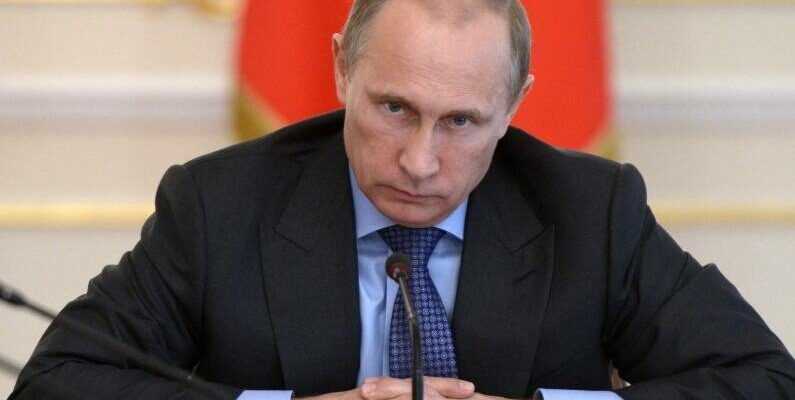(BFM Bourse) – In addition to the earthquake on the world stock markets, Russia’s invasion of Ukraine is also causing sudden jolts in the commodity markets, especially those in which Russia is a major player, i.e. oil , gas and wheat, but also metals such as aluminium, copper, palladium and nickel.
The fears expressed for weeks by the West have indeed materialized: Vladimir Putin, on the night of Wednesday to Thursday, launched a vast offensive against Ukraine. To the great displeasure of the world financial markets, which seemed wary of the idea that the verbal provocations of the master of the Kremlin did not turn into a real armed conflict.
Faced with a fait accompli this Thursday morning, global stock markets are dropping violently as investors turn away from risky assets.
Equity markets are not the only ones to suffer the consequences of Putin’s declaration of war, and of the Western economic responses that this invasion will generate. The excitement is also palpable on the commodities front, where Russia enjoys considerable weight.
We obviously think first of all of oil, which rose well above the 100 dollar mark per barrel in the morning for the first time since 2014, market operators fearing that the ongoing conflict could disrupt the supply of the second world exporter of oil. ‘black gold. Shortly before 3:20 p.m., the barrel of Brent from the North Sea jumped 7.1% to 100.7 dollars, when that of Texan “light sweet crude”, or WTI, took off 7.6% to 99.1 dollars, the two global crude benchmarks moving to a high since the summer of 2014. And “in the event of a large-scale Russian invasion, it should reach at least 130 dollars a barrel” warned Jeffrey Halley, analyst at Oanda, Wednesday. “The oil price spike is terrible news for businesses and consumers, and fundamentally it clarifies one of the main impacts of the war between Russia and Ukraine” on the global economy: “it will serve to fuel more inflation,” said Russ Mould, an analyst at AJ Bell.
Russia is also the world’s leading producer of natural gas, with Europe importing around 40% of its needs from Russia. Prices are therefore also soaring on this market, the MWh having jumped to more than 130 euros on the TTF (for “Title Transfer Facility), a virtual natural gas exchange point located in the Netherlands which serves as a reference for the European market.Up more than 50% compared to the previous day, gas seems on track to sign its strongest daily increase in more than three years.
While energy prices are soaring, many other materials are affected to varying degrees by current events. Among these, wheat, of which Russia is the world’s largest exporter and Ukraine the 5th, climbed to an unprecedented level, at 344 euros per tonne on Euronext. The previous record dates back to November 2021, when the ton rose to 313 euros.
Corn, of which Ukraine is also one of the world’s largest exporters, also saw its price rise sharply on Thursday morning, up to 304 euros per tonne, close to its record level of last August. The consequences of the attack launched overnight by Russia are still difficult to gauge for agricultural markets. “It’s completely new,” said Sébastien Poncelet, from Agritel. “When we see that there are explosions in Odessa, which is the first Ukrainian port, we assume that there will not be a lot of grain to load today,” he nevertheless believes, fatalistic. After the Russian invasion of Crimea in 2014, “prices had increased by 15 to 20% on the markets, before deflating after 4 to 5 months” he recalls. But “the fighting was mainly confined to Donbass, which is not a large agricultural region and the crisis remained centered on Crimea. What we see today is of a completely different magnitude”, warns the expert.
In addition to energy and grain, Russia is also one of the key players in the metals market. The world’s largest producer of palladium (more than 40% of the market), Russia is also the second largest producer of aluminum (far behind China and practically at the level of India) and nickel (behind South Africa) , the third largest nickel producer (behind the Philippines and Indonesia) and the 7th largest copper producer.
The prices of all of these metals therefore take off on Thursday against a backdrop of fears about their supply. On the London Metal Exchange, aluminum notably set a new record at more than 3,440 dollars per ton. Nickel, for its part, hit a peak for more than 10 years, at 25,600 dollars per ton. Palladium – used in particular in the manufacture of catalytic converters for gasoline vehicles – finally soared by more than 6% to more than 2,640 dollars an ounce, the highest since last August.
Quentin Soubranne – ©2022 BFM Bourse
